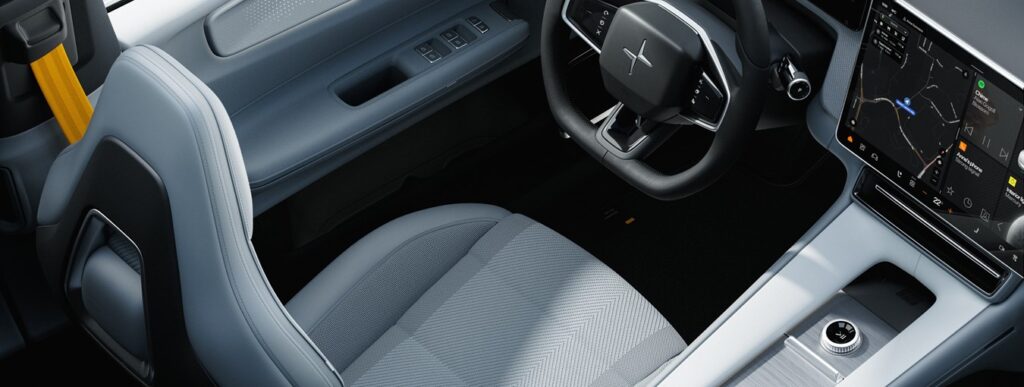Polestar, the electric vehicle (EV) automaker, has launched its new electric performance SUV coupé, the Polestar 4. The vehicle is positioned between Polestar 2 and Polestar 3 in terms of size and price, making it more accessible to a wider range of buyers. The design of the Polestar 4 sees the continuation of key elements first shown by the Polestar Precept concept car, with the elimination of the rear window and a unique immersive rear occupant experience. The interior and its materials have been designed around the theme of ‘soft tech’, drawing inspiration from the fashion and sportswear industries, and feature more circular and low-carbon materials, as well as a mono-material approach. Performance is impressive, with the Polestar 4 being the fastest production car the brand has developed to date, with a 0-100 km/h sprint completed in just 3.8 seconds and a maximum power output of 400 kW (544 hp).

Design
Polestar 4’s design is based on the concept of an SUV coupé, but rather than modifying an existing SUV, it has been designed from the ground up. The design is aerodynamically efficient and features a low nose, retractable door handles, flush glazing with frameless windows, rear aero blades and airflow optimisation around the rear light bar. The vehicle is built on the premium Sustainable Experience Architecture (SEA) developed by Geely Holding, and the generous interior proportions are especially evident in the rear, where occupants are cocooned in an intimate environment, with reclining seats. The standard full-length glass roof has optional electrochromic functionality, and a secondary media and climate control screen is mounted between the front seats to enable rear occupant control. The rear-view mirror is replaced by a high-definition screen that shows a real-time feed from a roof-mounted rear camera, enabling a far wider field of view than what can be experienced in most modern cars. The digital feed can be deactivated to allow drivers to instead see rear occupants if needed.

Sustainability
In Polestar 4, circular and low-carbon materials replace traditional solutions, including measures for greater supply chain transparency, like blockchain traceability for risk materials in the batteries. A full lifecycle assessment (LCA), showing the true carbon footprint of the car, will be published alongside the Polestar 4 Product Sustainability Declaration in 2024. A mono-material approach is applied to interior materials, where all layers of certain components are produced from the same base material. This allows them to be recycled more effectively and efficiently by eliminating the need for incompatible materials to be separated before recycling. New interior materials include a tailored knit textile which consists of 100% recycled PET, along with bio-attributed MicroTech vinyl and animal welfare-secured Nappa leather upholsteries. Inlay carpets in the interior are made using recycled PET and floor carpets are made using ECONYL, which includes reclaimed fishing nets. Specific door trim panels are made from NFPP (natural fibre polypropylene) which results in up to 50% less virgin plastic and a weight saving of up to 40%.

Performance
The Polestar 4 is the fastest production car the brand has developed, with a 0-100 km/h sprint completed in just 3.8 seconds and a maximum power output of 400 kW (544 hp). Motors are of a permanent magnet, synchronous design, and both dual- and single-motor versions will be available, with single-motor versions featuring rear-wheel drive. Despite the high output and performance, control remains sharp and handling responses result in a thrilling and nimble driving experience for all occupants.





























